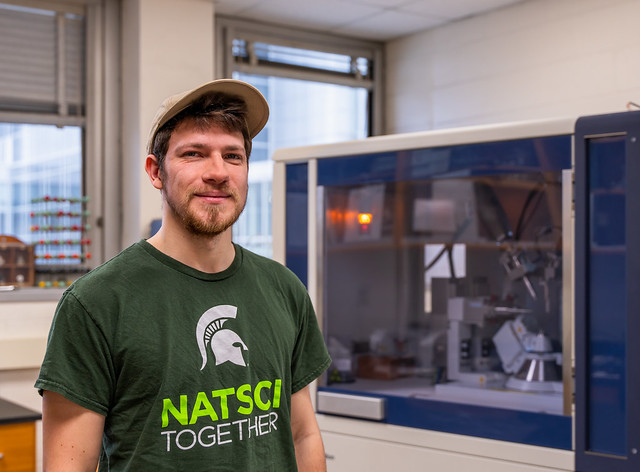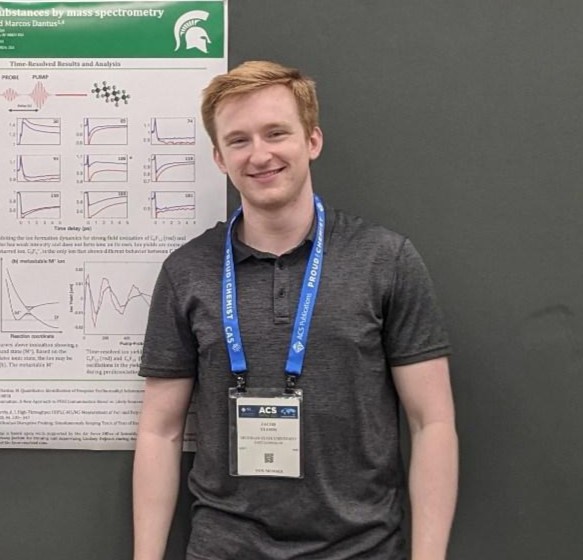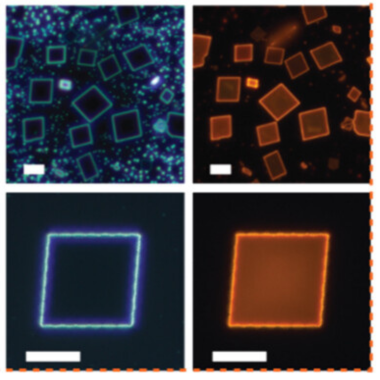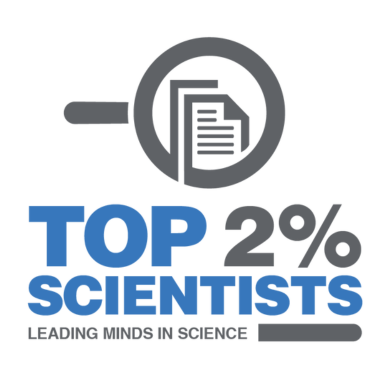Chemistry graduate students headed to national labs through DOE fellowships
Two MSU Chemistry graduate students—Jacob Stamm (Dantus Group) and Matt Boswell (Xie Group)—are recipients of 2024 Department of Energy Office of Science Graduate Student Research (SCGSR) awards. The outstanding doctoral researchers will address critical energy, environmental, and nuclear challenges while working at one of the DOE's national laboratories.
“The Department of Energy is committed to supporting and growing America’s science and technology workforce,” said Harriet Kung, Acting Director of the DOE Office of Science. “These awards are given at a critical time in a graduate student’s career, and we’re honored to be a part of the journey. SCGSR nurtures talent and curiosity in students from all walks of life to meet our greatest scientific challenges.”
The Department of Chemistry and the College of Natural Science sat down with MSU's latest awardees to learn more about their research and scientific curiosity.
Matt Boswell: high pressure quantum chemistry
Could you tell us about the research you're doing?
What I'm working on is quantum spin liquids (QSLs). The difficulty in quantum entanglement is finding it, so I want to see if I can calculate quantum entanglement as a function of pressure. With pressure, a lot of materials can exhibit superconductivity because you're pushing elements together, which will lead to increased interaction strength. So, if we understand how entanglement is as a function of pressure, it can lead to better insight or calculations for different materials as pressure is applied.

You mentioned in your research paper that delafossites are very viable as a candidate for QSLs. Could you tell us more about that?
The word ‘candidates’ is actually a very broad term. Essentially anything that doesn't exhibit any kind of magnetic order could be considered a QSL candidate. It's partially due to the difficulty of measuring entanglement, which is a key factor of QSLs.
Delafossites are nice because they're easy to synthesize, and they don't have any structural disorder. In 2019, delafossites were shown to have potential QSL characteristics. And now, it has exploded in the past 5-6 years.
Are there notable similarities or differences among different types of delafossites?
My initial project was on potassium holmium selenium (KHoSe2), which is a different rare earth. Generally, for quantum spin liquids, you want an effective spin half because it has higher quantum fluctuations. Just quantum moments or quantum disorder can be shifted better to a more disordered state. So, depending on the rare earth used and the kind of effective spin, it can have varying different properties. Potassium ytterbium selenium (KYbSe2), for example, was shown to proximate into a QSL under some temperatures, but it still does not have the ground state.
After sodium ytterbium oxide was first shown, everyone was looking at different alkaline metals and chalcogens and seeing how it can influence certain properties. The big thing for delafossites and QSLs is interaction strength between the nearest neighbor and next nearest neighbor. So, some ways to modify the interaction strength is by changing the nonmagnetic ions. Modifying the interaction strength is one of the properties I am currently studying such as looking at CuYbSe2.
How has this field grown and developed since your time at MSU? Are there any interesting breakthroughs or possible discoveries apart from your research that you're excited to talk about?
The main influence for [my research] was the entanglement witnesses that were used. If we can measure entanglement, it gives a much better idea of these QSL ground states. My initial project was on KHoSe2, so I’ve always been keeping an eye out for other rare earth delafossite research. In the past two years, some research has shifted away from Yb to Tm and has shown interesting results. As for what I'm doing, I'd say the biggest one was the entanglement witnesses.
Can you tell us a little bit about the facilities and instruments that will be utilized in your work?
You essentially need both elastic and inelastic neutron scattering to measure the entanglement witnesses. With this, we can generate the nearest neighbor interactions and the next nearest neighbor interactions, and from there, derive the entanglement. So, the beamline I'm going to be working on mainly is the SNAP instrument, which has high-pressured setups and a direct beamline from the source, so it has a very high flux and can determine the elastic scattering. Then, I'm planning to use the instrument ARCS to gain some inelastic neutron scattering, and depending on the size of the crystal, I can use single crystal instruments, such as TOPAZ to determine if there is anisotropy.
DEMAND might also be a good one, but you would need very large crystals, and that’s one of the main challenges for high pressures. At the very least, powder diffraction through SNAP and hopefully ARCS will be obtained, and there'll be reports of new data on the metastable phase of sodium ytterbium selenium. I'd imagine other rare earth delafossites will have a similar metastable state that I could potentially run.
How did you feel when you received the grant? What were people’s reactions?
A lot of excitement, a little bit of nerves. I feel like you always have imposter syndrome when you get a big opportunity. I'm a bit nervous, though, just moving away and being away for a year. My parents were excited, too, and I think my grandmother's a little sad because I'll be moving away.
My advisor was excited, too. One of her first grad students also got the grant. So, she was like, “I'm batting two for two for my students that have applied”.
What are your plans for the foreseeable future?
Hopefully I will graduate in the next semester after this grant ends. Then, it depends on what job offers I get and maybe how much I like working in national lab. I can see myself going in any direction, based on what I'm doing.
Jacob Stamm: ultrafast science & photonic reagents
Could you speak a bit about the research the Dantus Group pursues?
The Dantus group specializes in ultrafast science, meaning that we use short pulses of laser light to study and control chemical dynamics. The section I work in involves studying the molecular dynamics of polyatomic molecules in excited and ionized states before they fall apart. Understanding the timescales and mechanisms of molecular fragmentation is crucial information, as they underpin the resulting mass spectrum. Given how important mass spectra are for chemical identification, it is important to be able to “see” what the molecules are doing as they fall apart. The overarching goal is to create a “molecular movie” that captures the behavior of the molecule in real-time as they dissociate.
Since most of this excited-state chemistry occurs in the femtosecond to picosecond regime, special methods and equipment (such as femtosecond lasers) are needed to clock the dynamics. By understanding the fragmentation mechanism and timescale, we can leverage that information to exert control over the fate of the molecule by using carefully shaped femtosecond laser pulses as a “photonic reagent”.

And what originally drew you to this area of chemistry?
I always found it fascinating how light can influence chemistry, which may explain why the physical chemistry classes were my favorite during undergrad. Figuring out what the molecules were doing based on their interaction with light is both challenging and often full of surprises. It’s an endeavor that I can easily see myself spending my life exploring all the nooks and crannies, since it feels like an endless (but fruitful) pursuit.
Sometimes it feels like you have a sealed box with some unknown object inside, and you have to shake the box in all sorts of directions to try and get a mental model for what’s inside. It’s the “sealed box-ness” of studying these molecules, and the abstraction of their behavior into measurable data that makes for such a rewarding (and challenging) puzzle. Plenty of surprises end up occurring as well, and having your chemical intuition challenged by new results is always a chance to understand chemistry on a deeper level. Working in the lab and using these femtosecond lasers to perform these measurements compliments the interpretation aspect and makes the data collection aspect that much more satisfying.
What project will you be tackling with your SCGSR award, and what do you find most exciting about the possible findings, breakthroughs, or applications?
The SCGSR award will fund an 11 month stay at the Stanford Linear Accelerator Center (SLAC). I will be using their coherent X-ray source to apply time-resolved X-ray scattering to the field of coherent control. There has been a longstanding dream in our field to use specially customized femtosecond laser pulses to steer a molecule down a specific fragmentation pathway, opening up the possibility of using light as a “photonic reagent”.
This field is an ongoing one, which has some success in controlling the fragmentation dynamics of polyatomic molecules. However, the mechanism of how the light influences the fragmentation pattern is often difficult to determine. We will be applying X-ray scattering to directly image the molecule as our customized femtosecond laser is in the process of controlling the excited-state chemistry.
This project could represent a big stepping stone in interpreting bond-selective chemical schemes and could demonstrate that time-resolved X-ray scattering is an incredibly useful tool to find more efficient and selective quantum chemical control mechanisms. Only the resources at SLAC (sufficiently high X-ray flux with a gas phase scattering setup) provide the means to perform such an experiment.
What does receiving this award mean to you personally?
I’m honored to receive such a fellowship. I’ve been at MSU for many years now and getting the chance to expand my research horizons while working at a national lab will give me a much better perspective of our field. I’m sure I can learn a lot from researchers there, many of which will have different perspectives. This award means that I can be exposed to other research and get experienced with cutting edge spectroscopic methods and facilities that I could only read about before this fellowship.



